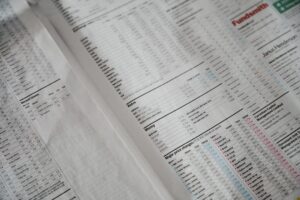Can You Really Make Money on Forex Trading? A Beginner’s Guide to Forex Trading
Forex trading, also known as foreign exchange trading, has gained immense popularity in recent years. With the promise of making substantial profits, it has attracted the attention of many individuals looking for alternative sources of income. But the question remains, can you really make money on forex trading? In this beginner’s guide to forex trading, we will explore the potential for profits, as well as the risks involved in this lucrative but volatile market.
Forex trading involves buying and selling currencies in order to profit from the fluctuations in their exchange rates. Traders speculate on the direction in which a currency pair will move, aiming to buy low and sell high or sell high and buy low. The forex market operates 24 hours a day, five days a week, making it highly accessible for traders around the world.
The potential for profits in forex trading is undoubtedly high. The forex market is the largest and most liquid financial market globally, with an average daily trading volume of about $6.6 trillion. The high liquidity of the market means that traders can enter and exit positions quickly, allowing for potential profits to be made within a short period of time.
Furthermore, the forex market offers a high level of leverage, which enables traders to control larger positions with a smaller amount of capital. Leverage allows traders to amplify their potential profits, but it also magnifies the potential losses. It is essential for beginners to understand the risks involved in using leverage and to use it wisely and cautiously.
To make money in forex trading, traders need to develop a solid trading strategy and have a deep understanding of the market. Technical analysis, fundamental analysis, and sentiment analysis are the three main approaches used by traders to analyze the forex market and make informed trading decisions.
Technical analysis involves the use of charts, indicators, and patterns to predict future price movements. Traders analyze historical price data to identify trends and patterns that can help them determine when to enter or exit a trade.
Fundamental analysis, on the other hand, focuses on economic, political, and social factors that can impact the value of a currency. Traders who use fundamental analysis monitor economic indicators, such as GDP growth, interest rates, and employment data, to identify potential trading opportunities.
Sentiment analysis involves gauging the overall sentiment of market participants towards a particular currency pair. Traders who use sentiment analysis pay attention to news, market rumors, and social media sentiment to determine whether traders are bullish or bearish on a currency.
While having a solid trading strategy is crucial, it is equally important to manage risk effectively. Forex trading is inherently risky, and it is not uncommon for traders to lose money. Traders should never risk more than they can afford to lose and should always use proper risk management techniques, such as setting stop-loss orders to limit potential losses.
It is also essential for beginners to educate themselves before diving into forex trading. There are numerous educational resources available, including online courses, webinars, and trading forums. Forex brokers often offer demo accounts where beginners can practice trading with virtual money, allowing them to gain hands-on experience without risking real capital.
In conclusion, while it is possible to make money on forex trading, it is not a guaranteed path to riches. Forex trading requires a deep understanding of the market, a solid trading strategy, and effective risk management. Beginners should approach forex trading with caution, educate themselves, and start with smaller positions until they gain confidence and experience. With the right knowledge and skills, forex trading can be a profitable venture for those who are willing to put in the time and effort to succeed.






